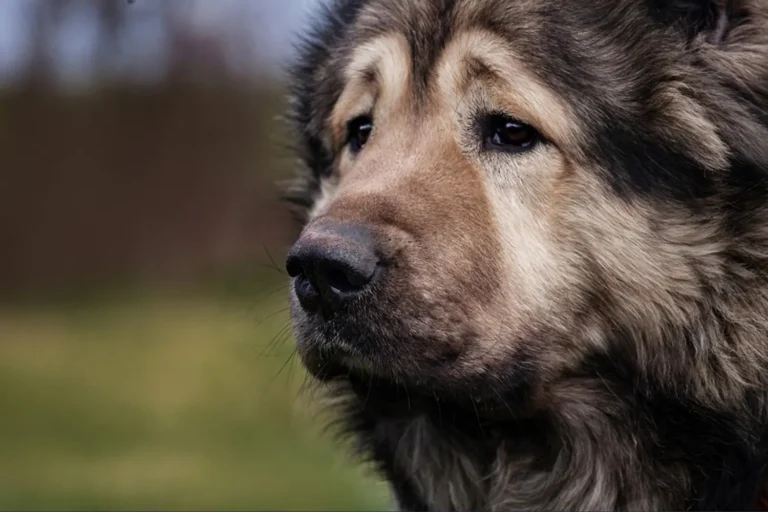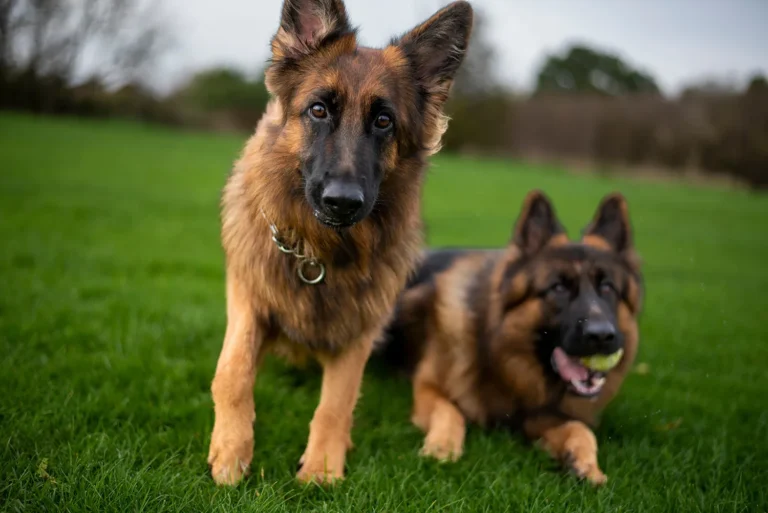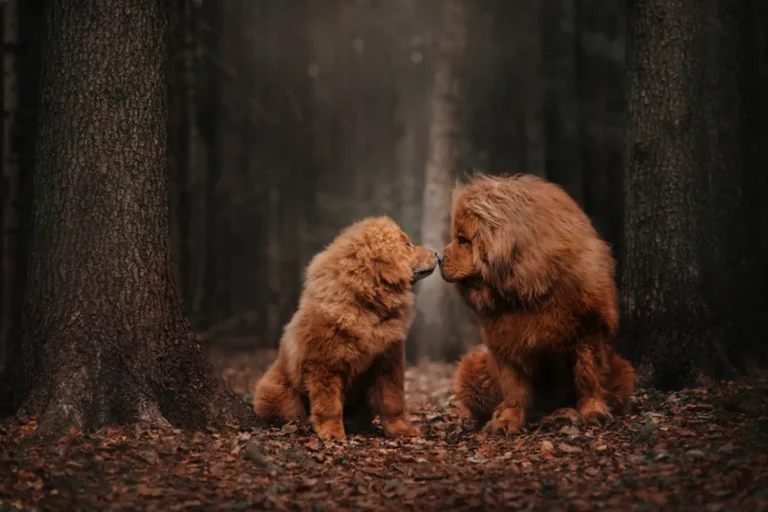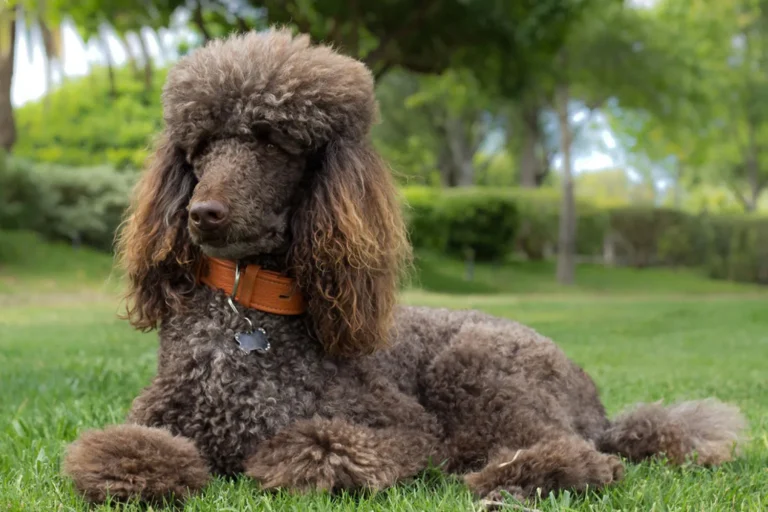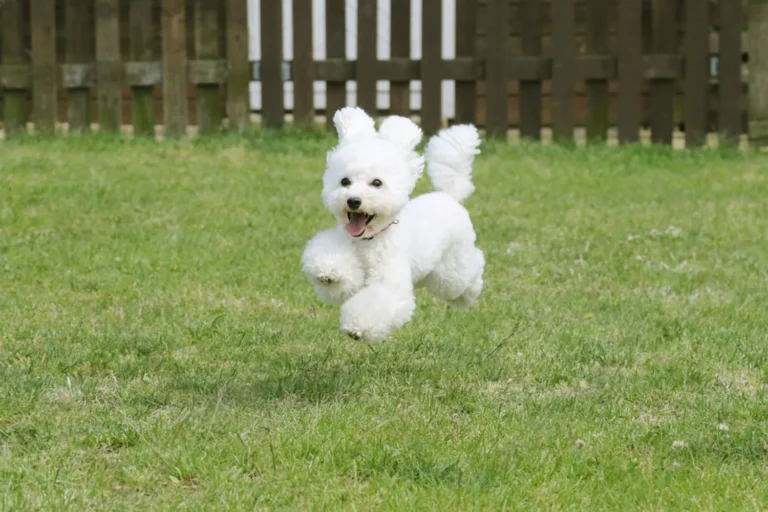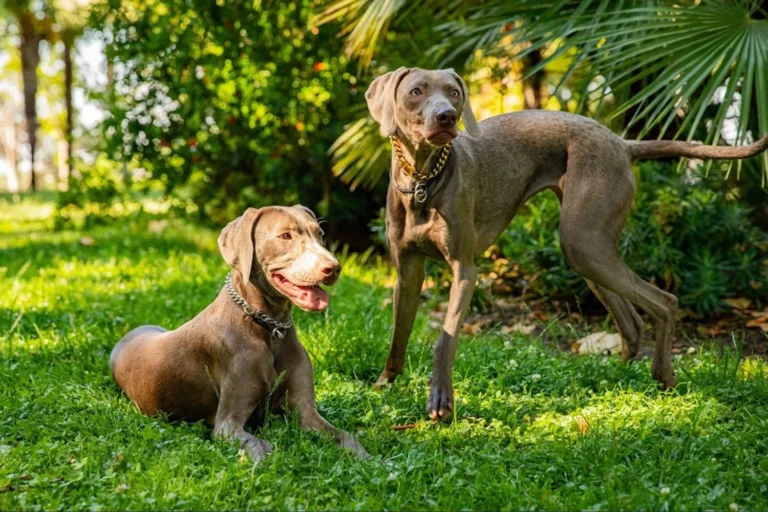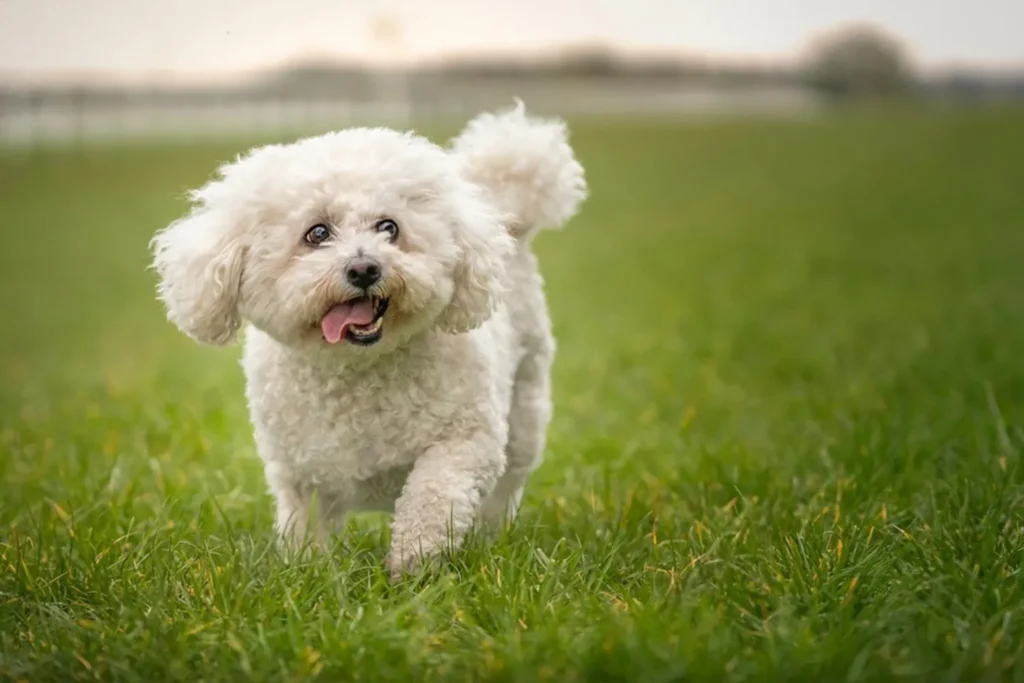
Bringing home a Bichon feels like plugging a smile straight into your day. They’re charming, cuddly, and somehow always know when you need a little nuzzle. The first time I dog sat a Bichon named Coco, she had everyone grinning within ten minutes wiggly walk, happy twirls, then a satisfied snuggle on the couch. It’s hard not to fall for that cheerful sparkle.
Expect a playful shadow who loves short walks, hallway fetch, and quick training games Coco adored showing off a “spin” for treats. Keep that cloud soft coat tidy with brief brush ups a few times a week and plan for regular grooming appointments. They do great in apartments but crave company, so build in gentle alone time practice early. In this guide, I’ll walk you through what to expect, from temperament and exercise to grooming, training tips, and finding your perfect little fluff.
What Is the History and Origin of the Bichon Frise?
These little white charmers have a surprisingly epic backstory. Bichon type dogs have been around for roughly 2,000 years, first popping up around the Mediterranean. Sailors and merchants adored them because they were small, cheerful, and incredibly sociable perfect companions on long trips and irresistible as trade goods in busy ports. I like to picture them trotting down a ship’s gangplank, tail up, winning over whoever met them with that friendly sparkle in their eyes.
From bustling markets to royal halls, the Bichon’s personality carried them far. During the Renaissance, they found a new calling as court favorites in France. Their cloudlike coats and merry manners fit right in with the pageantry of the era. I remember wandering through a museum in Paris and spotting a portrait of a noblewoman with a fluffy white dog at her feet I swear it had the same mischievous look my friend’s Bichon gives when he’s about to steal a sock. That royal chapter cemented their reputation as lapdogs with flair.
But they’re more than pretty fluff. In the 19th century, Bichons traded velvet cushions for the hustle of the street. Their clownish, people loving nature made them natural performers circus dogs, trick dogs, crowd pleasers. Some even took on serious work, helping lead the blind. I once watched a Bichon at a street fair hop onto a tiny stool, wave a paw, and “play dead” with dramatic flair the applause had him wagging so hard his whole body wobbled. If you live with a Bichon, lean into that love of attention: teach fun tricks, build a little routine, and let them soak up praise. It’s in their DNA.
By the early 20th century, French breeders stepped in to preserve and refine the breed, giving it the name Bichon à poil frisé literally “curly coated Bichon.” That careful stewardship helped the breed cross the Atlantic in 1956, where they started charming American families just as quickly as they had European courts. They’re adaptable, smart, and happiest when they’re in the middle of the action whether that’s a city apartment or a suburban backyard.
In 1964, enthusiasts formed the Bichon Frise Club to protect and promote the breed, and soon after, a Bichon dazzled at the Westminster Kennel Club Dog Show. I remember watching one glide around the ring on TV like a fluffy comet, head high, tail curled my own dog tilted his head as if to say, “I could do that.” From ships to salons to show rings, the Bichon Frise has always been a people magnet. Under that powder puff coat is a resilient little traveler with a big heart, still ready to make friends wherever life takes them.
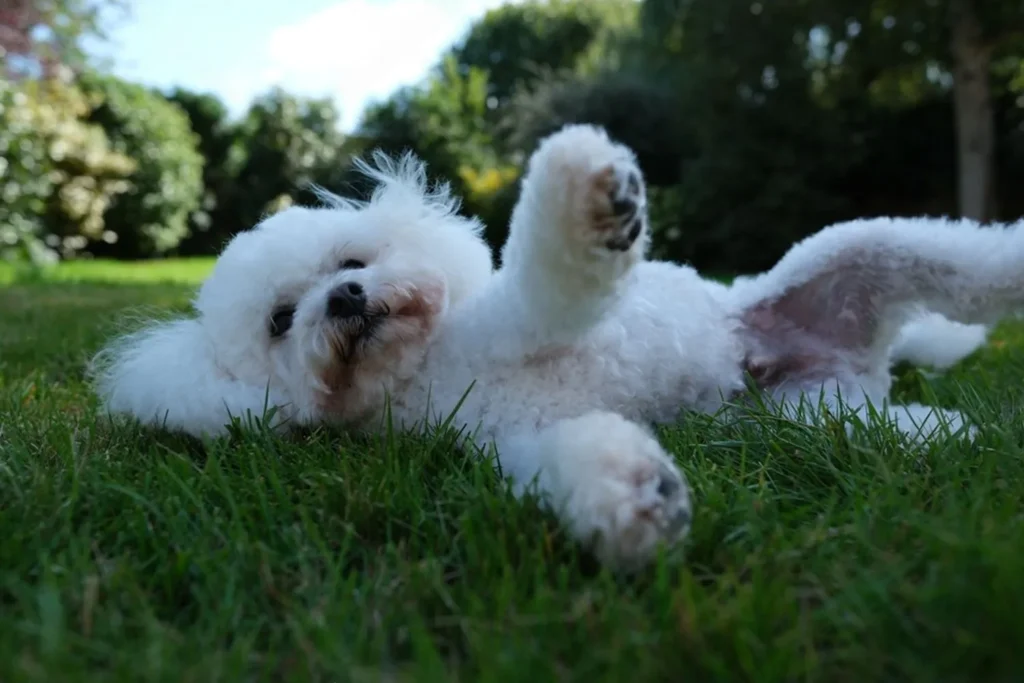
What Is the Bichon Frise Breed?
Think of a living cotton ball with a cheerful grin and you’ve got the Bichon Frise. Their velvety, plush white coats and those tiny black button eyes and nose give them an irresistible, toy like look. They’re part of the same charming “Bichon family” as the Coton de Tulear, Maltese, and Havanese cousins in spirit and fluff. The American Kennel Club places Bichons in the non sporting group rather than the toy group, which fits: they’re versatile little companions, playful and sturdy, not just lap decorations.
I once dog sat a Bichon named Marshmallow who would bounce through the hallway like a happy snowflake. A quick game of fetch, a brisk walk around the block, and he was content to curl up on my feet. They’re social butterflies, great for apartments or busy families, and they love being in the middle of whatever you’re doing.
Grooming wise, plan for regular brushing to keep that cloud soft coat from matting, plus routine professional trims to maintain the signature round, fluffy look. A gentle daily wipe around the eyes helps keep the face tidy and lets those little black features pop. Keep them engaged with positive training and short, fun sessions Bichons are eager to please and shine when praised.
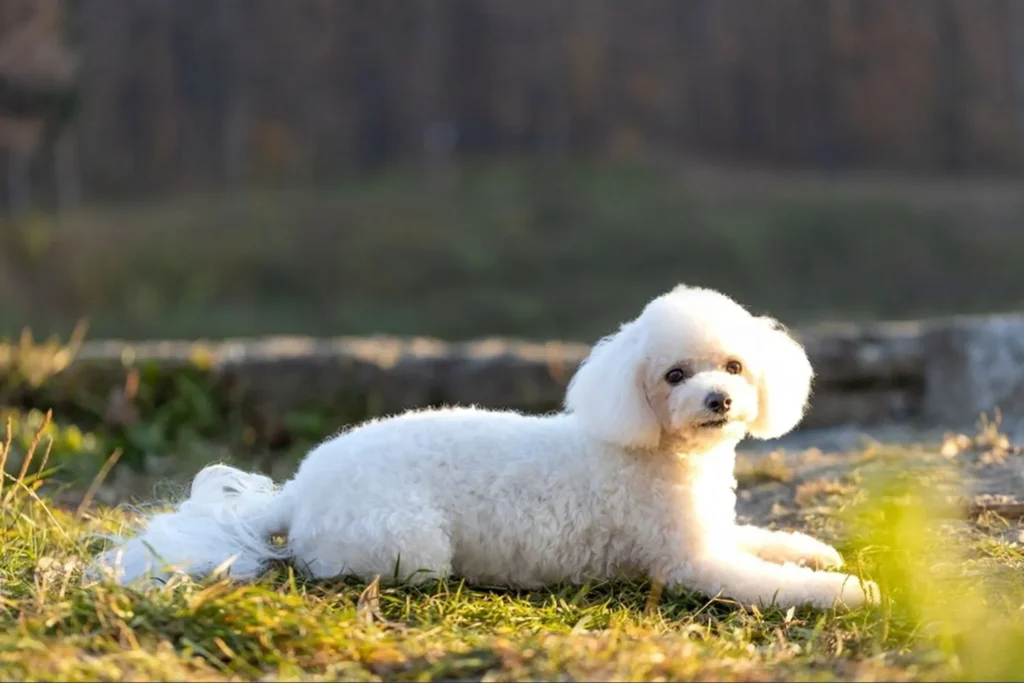
Who Is a Bichon Frise Best For?
If you live in a small apartment and want a cheerful companion who won’t hog the sofa, a Bichon Frise fits the bill beautifully. They’re compact, easy to maneuver around tight spaces, and generally not big barkers, which your neighbors will appreciate. I used to pass a Bichon named Miso on my morning elevator ride she’d just lean into everyone for pets and then curl up quietly at her owner’s feet like a little cloud. City life suits them well as long as they get their daily strolls and a few bursts of play.
Families tend to adore Bichons, and the feeling is mutual. They’re typically gentle and playful with kids, happy to chase a soft ball down the hallway or do “zoomies” around the living room. In larger homes, they’ll make good use of the space, trotting room to room to check on their people. They’re social butterflies by nature and usually get along nicely with other dogs. A friend of mine adopted a Bichon from a local rescue, and within a week he was sharing toys with their older Lab and sneaking into every family movie night.
People with mild allergies often find Bichons to be a comfortable match because they shed very little and don’t drool. Their soft, cottony coat does need regular care, though think brushing a few times a week and professional grooming every month or so to keep mats away. It’s a fair trade if you want a cleaner couch and fewer tumbleweeds of fur.
Bichons thrive with companionship, so they’re wonderful for retirees and older couples who have the time to dote on a dog. They also shine with folks who work from home or can bring their pup along on errands. One time I tucked a Bichon into a sling bag for a short coffee run he snoozed through the whole thing like a seasoned traveler. On the flip side, if you’re out for long stretches most days, plan for a dog walker, doggy daycare, or a reliable neighbor; Bichons can get anxious when left alone too long and need that steady attention.
If you’re thinking adoption, Bichons often adapt quickly to new routines and families. Give them a gentle introduction to kids and resident pets, keep first meetings calm, and use treats to build positive associations. A couple of short walks, a few play sessions, plenty of cuddles, and this little companion will happily fit right into your life whether that’s a cozy studio or a busy family home.
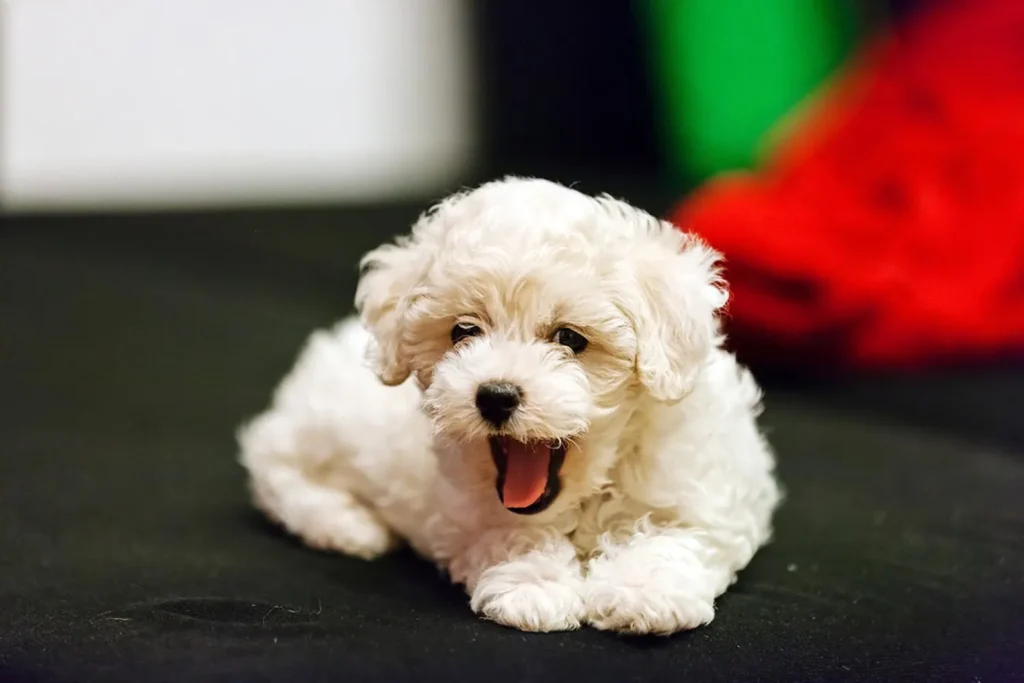
Bichon Frise Grooming and Shedding
That cloudlike coat is as soft as it looks, but it does ask for regular pampering. Plan on frequent brushing and routine baths, plus a trip to a professional groomer now and then. I keep a slicker brush and a metal comb by the couch and do quick daily touch ups five to ten minutes makes a big difference. Work in sections, especially behind the ears, under the collar, and around the armpits where mats love to hide. Skip too many brushings and you’ll find tangles turning into mats, and mats can pull at the skin and cause real discomfort. A light detangling spray and gentle “line brushing” saved me more than once after a muddy park run.
A standing date with the groomer every 4-6 weeks keeps things neat: bath, nail trim, tidy face and paws, and a haircut to your preferred style (the classic round “teddy” head always makes me smile). I learned to blow dry on low after baths to keep the coat fluffy and prevent matting air drying can tighten curls. Check ears weekly, wipe under the eyes to manage tear stains, and brush those little teeth at least three times a week to help prevent dental trouble.
As for shedding, Bichons are light shedders; most loose hairs get caught in the coat rather than on your clothes. So you might vacuum less, but you’ll brush more fair trade in my book.
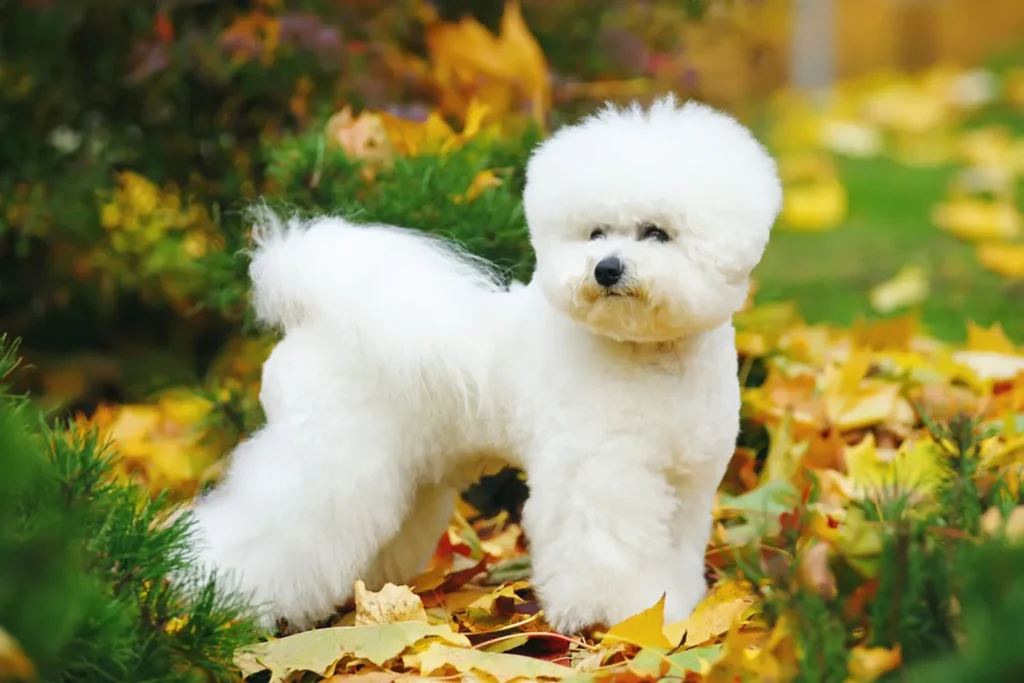
Do Bichon Frises Bark a Lot?
Short answer: usually not. Most Bichon Frises are fairly quiet by nature and don’t fit the “yappy small dog” stereotype. They’re cheerful little companions with a bit of a feisty spark, but that spark doesn’t typically show up as nonstop barking. My neighbor’s Bichon, Luna, is a fluffy cloud who spends most afternoons snoring on the sofa though she’ll toss out a single “boof” if the doorbell rings, just to keep everyone honest.
That said, dogs are individuals. A Bichon might bark to get your attention, especially if they’ve learned that a cute little woof brings you running with cuddles. They may also give an alert bark when something changes new person at the door, squirrel on the fence, a mysterious leaf blowing down the sidewalk. If you’re seeing frequent, intense, or seemingly uncontrollable barking, that’s a sign there’s something to work on. It isn’t part of their inherent personality to be loud all day.
A few things help a lot. I like to reward calm moments before the bark ever starts treats for quiet lounging, praise for settling on a mat. Teach a “quiet” cue by marking and rewarding those silent beats after an alert bark. Try not to reinforce the noise: if your Bichon learns that barking makes you pick them up, they’ll keep doing it. Give their brain a job with puzzle feeders, snuffle mats, and short, sniffy walks; a tired mind is a quiet mind. Manage triggers by closing blinds on busy windows, using soft music, and practicing relaxed doorbell routines. And because Bichons are so people oriented, keep goodbyes low key and build up alone time gradually to prevent separation worries.
If the barking is new, excessive, or tied to stress, check in with your vet and consider a positive reinforcement trainer. With a little guidance, most Bichons stay pleasantly low volume more cuddle commentary than constant commentary.
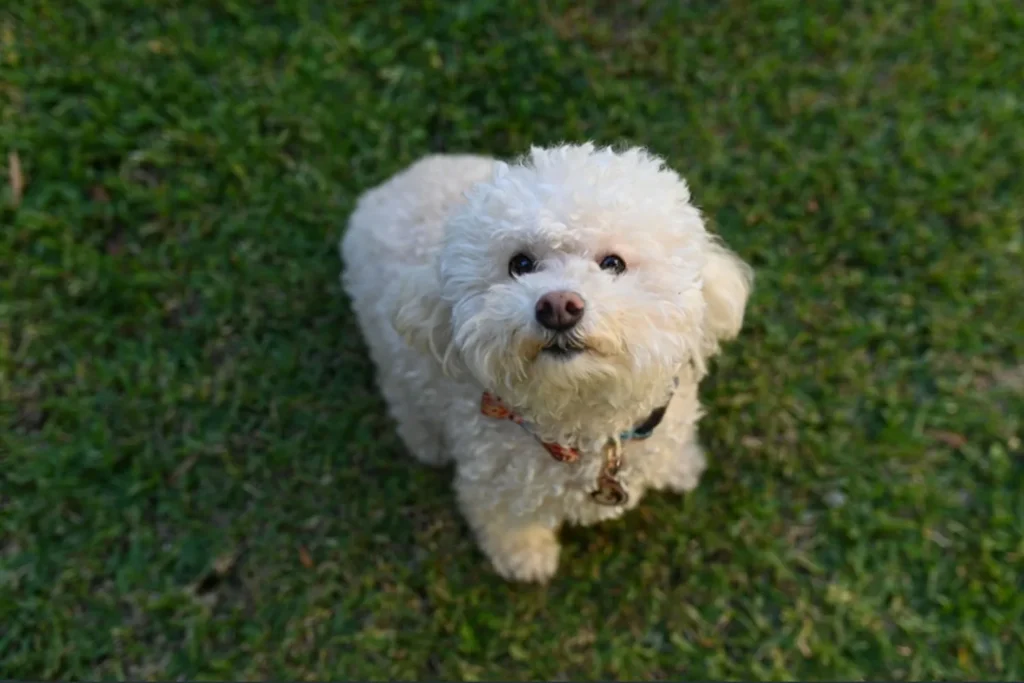
What Is the Average Height and Weight of a Bichon Frise?
Bichons are small, sturdy little clouds. Most stand about 9.5 to 11.5 inches tall at the shoulder, which is roughly the height of a loaf of bread on its side. Weight wise, you’ll typically see them in the 12 to 18 pound range, and both females and males tend to weigh about 3-6 kg. That fluffy coat can make them look bigger or smaller than they are, so the numbers help keep things honest. https://en.wikipedia.org/wiki/Bichon_Fris%C3%A9
A quick tip from my routine: measure height at the shoulder, not the top of the head ears and hairdos don’t count. I keep a soft tape measure in the drawer and do a little check after grooming day. One time I was convinced my Bichon had packed on two pounds overnight, but it turned out he’d just puffed up after his bath. The scale told the truth, as it always does.
If your Bichon is still growing, expect them to settle into their adult size by around their first birthday. Aim for a trim, hourglass shape when you look from above and a slight tummy tuck from the side you should be able to feel ribs under the fluff without digging. Keeping them in that 12-18 pound, 3-6 kg window helps with energy, agility, and happy joints. I break treats into tiny pieces, use a harness that doesn’t pinch, and do regular weigh ins at the vet or on a home scale. It’s amazing how much difference a few ounces can make on a little dog.
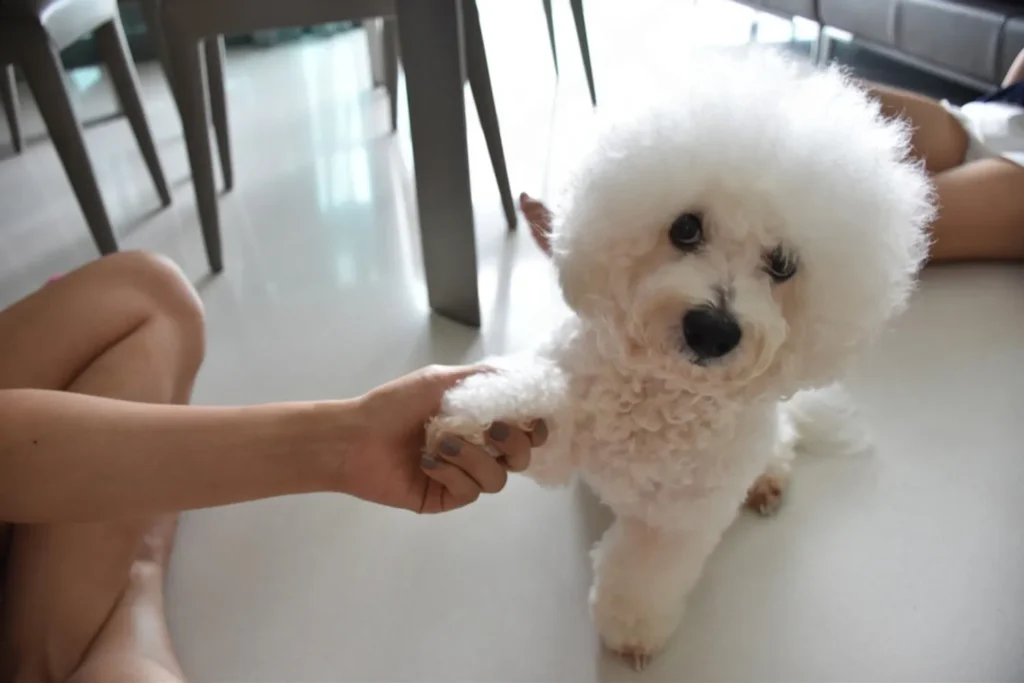
Are Bichon Frises Easy to Train?
These little cotton balls are bright and eager to learn, but I won’t sugarcoat it: house training a Bichon can test your patience. They’re quick studies with tricks and manners, yet potty routines can take longer to click. What helps most is a rock-solid routine and a cozy crate used as a safe den. I set a simple schedule out first thing in the morning, after meals and naps, and right before bed and I keep potty trips calm and boring. If there’s an accident, I clean with an enzyme cleaner and move on. No lectures. I once tethered my Bichon to me with a light leash at home for a week, and it was a game changer for catching those “I’m looking for a corner” moments.
Start training the very day your Bichon comes home. By eight weeks, they’re little sponges, soaking up habits fast good ones and not so good ones. Keep sessions short and happy, a few minutes at a time, and end on a win. Treats and praise work beautifully, but vary the rewards so you’re not just a walking snack dispenser sometimes a tiny treat, sometimes a cheerful “yes!” or a favorite toy. They’re clever and a tad cunning; mine once tried to fake a “sit” by scooting halfway down when he saw the treat bag. Obedience basics like sit, stay, come, and leave it are essential with these smarties.
Around 10-12 weeks, puppy kindergarten is pure gold. It’s social time with new dogs, people, and sounds, plus guided practice with polite greetings and impulse control. My friend’s Bichon came home from class learning to settle on a mat during dinner no more table side theatrics. Keep things consistent, keep it kind, and remember that a Bichon trained with patience will repay you tenfold with charm, cooperation, and plenty of laughs.
How Do Bichon Frises Behave? A Look at Their Temperament and Personality
When a Bichon Frise trots into a room, it’s like a little comedian has taken the stage. They’re natural charmers who seem to know exactly how to make people smile. That performer streak is real you can see it in the way they tilt their head for laughs or proudly repeat a trick the second they notice applause. I once met a Bichon at a Saturday farmer’s market who “high fived” every friendly vendor on the row. By the third stand he had a fan club and a pocket full of tiny treats.
Bichons are smart and pick up new cues quickly, so short, upbeat training sessions work wonders. Five minutes here and there, a few tasty rewards, and they’ll be spinning, bowing, or weaving through your legs like it’s opening night. They’re also big time people dogs: affectionate, playful, and happiest when they’re in the middle of the action. Expect those sudden bursts of energy the zoomies will strike without warning. My neighbor’s Bichon does a daily racetrack loop around the sofa, pauses to grin, then zooms off again. A couple of brisk play sessions and a light walk usually take the edge off.
Though they’re social butterflies, there’s a little independent streak too. After the show, many will wander off to a sunny spot for a snooze. Still, they don’t love being left alone. I’ve had good luck easing that with puzzle toys, a comfy “home base” bed, and practicing short departures so they learn that you always come back. Keep things fun, keep them included, and a Bichon will give you a cheerful companion who’s always ready for an encore.
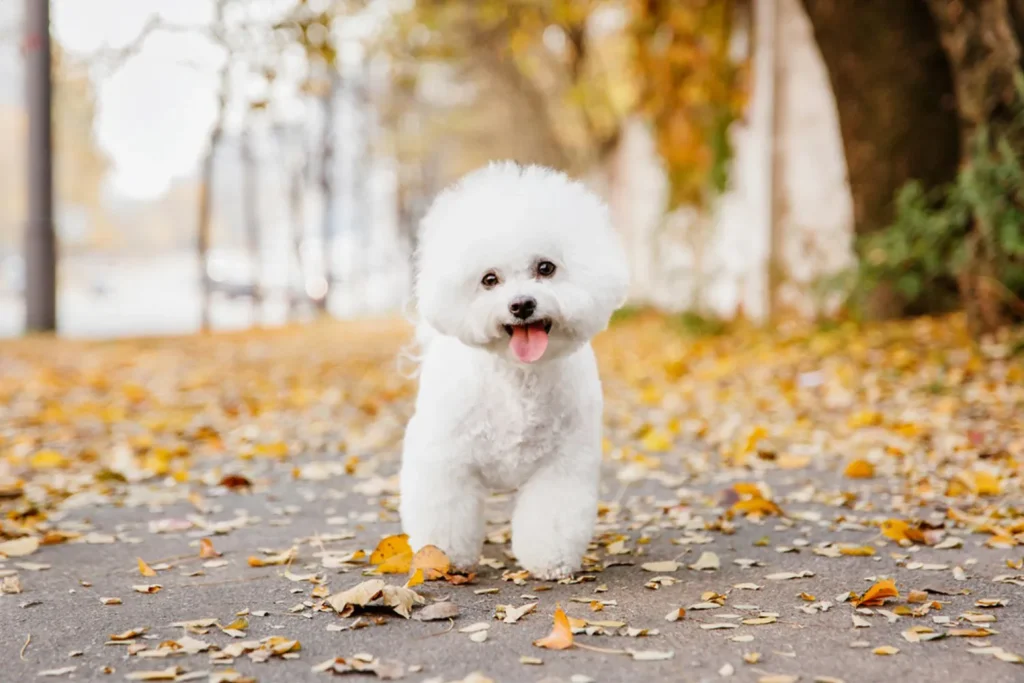
Do Bichon Frises Have Common Health Issues?
Short answer: yes, a few and most of them are manageable with good habits and regular vet care. Because Bichons are small, their mouths can get crowded, which makes them more prone to plaque and gum disease. I learned early on to make toothbrushing part of our nightly routine; a tiny brush, a dab of dog safe toothpaste, and lots of praise go a long way. If brushing every day feels like a lot at first, aim for a few times a week and add dental chews or wipes. Your groomer or vet can show you the trick I still remember my groomer handing me a toothbrush like it was a magic wand. Staying on top of dental care pays off, because healthy teeth can also support heart health down the line.
Bichons can also be prone to bladder stones. If you ever notice frequent squatting, straining to pee, or pink tinged urine, call your vet right away. Prevention wise, keep fresh water available at all times, encourage regular potty breaks, and ask your vet about diets that support urinary health if your pup is at risk. I keep a collapsible water bowl in my bag and it’s saved us on more than one hot day. Weight is another biggie these fluffy charmers can pack on pounds quickly, and extra weight doesn’t just affect the waistline; it can stress the heart and joints. I measure meals with a scoop (not eyeballing), swap high calorie treats for crunchy veggies, and mix in fun, low impact exercise like short walks and indoor fetch. Trust me, those big pleading eyes are powerful; I learned to redirect with a toy instead of a second snack.
Heart disease and allergies round out the usual suspects. Regular checkups help catch heart issues early my vet once picked up a very soft murmur during a routine visit, and early monitoring made all the difference. Keep an eye out for subtle signs like a lingering cough after exercise or fatigue on walks. As for allergies, Bichons can be itchy pups. Licking paws, ear irritation, and hot spots are common clues. Wiping paws after walks, using a gentle, hypoallergenic shampoo, and adding vet approved omega-3s can help calm the itch. If food seems to be the trigger, your vet can guide you through an elimination diet to pinpoint the culprit. Bottom line: a little routine goes a long way brush those teeth, keep the water flowing, watch the portions, and see your vet regularly. Your Bichon’s future self will thank you with extra tail wags.
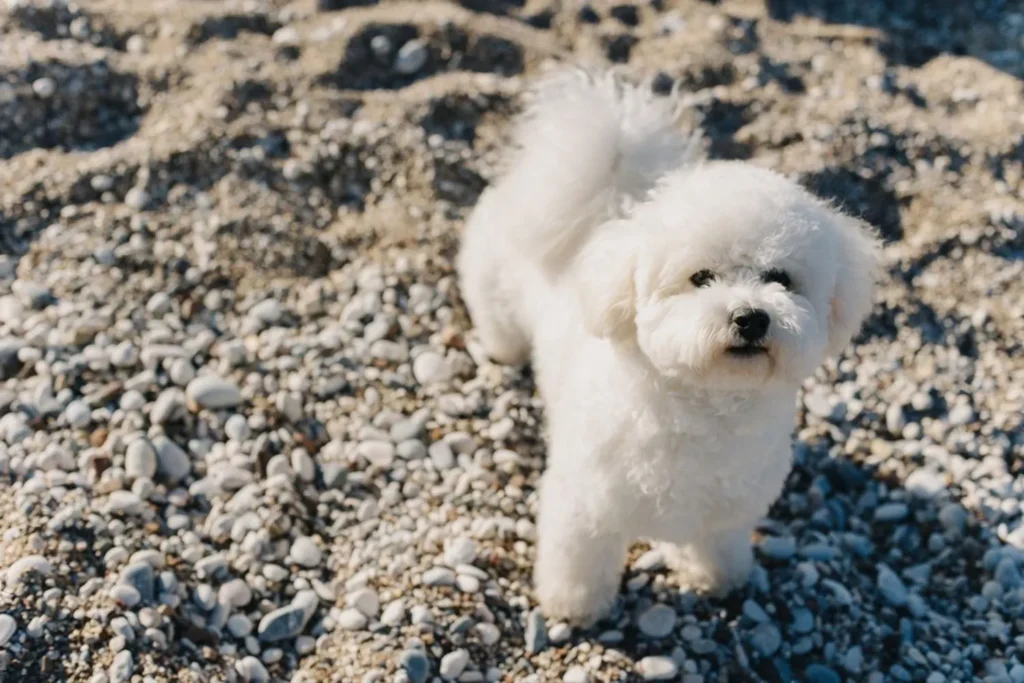
What Is the Lifespan of a Bichon Frise?
Most Bichon Frises live around 12 to 15 years, and it’s not unusual for a well cared for Bichon to reach 16 or even 17. Smaller dogs tend to live longer than their larger cousins, and the Bichon’s petite size definitely works in their favor. My neighbor’s Bichon, Marshmallow, was still doing cheerful sidewalk parades at 15 and only slowed down when the squirrels stopped teasing him.
They’re generally a healthy breed and don’t struggle with many life threatening issues, which helps their years stretch out nicely. A little preventive care goes a long way: keep them at a healthy weight, feed a balanced diet (watch those table scraps those eyes are persuasive!), and stick to regular vet checkups. Daily walks and a bit of play keep their bodies moving, while puzzle toys and training games keep their busy brains buzzing. Don’t forget the basics like dental care and grooming; clean teeth and skin make a bigger difference over time than most people realize.
If you’re getting a puppy, ask the breeder about the longevity of their lines, and if you’re adopting, celebrate that these little companions are in it for the long haul. Plan for a sweet, spirited friend who’ll be by your side for many years couch cuddles, park adventures, and all.
How Much Should a Bichon Frise Eat?
Skip the “always full” bowl and measure every meal. Bichons are charming little foodies, and if you free feed, they can quietly plump up before you know it. I learned this with my friend’s Bichon, who would graze all day and turn into a fluffy marshmallow by winter. A simple measuring cup or better yet, a small kitchen scale makes a big difference. Start with the amount recommended on your dog food’s label for your Bichon’s weight and activity level, then adjust based on how they look and feel. You should be able to feel ribs under a light layer of padding and see a gentle waist. Keep treats to about 10% of daily intake, and always provide fresh water.
For feeding schedule, think little and often at first. Puppies have tiny tummies: offer at least four small meals a day. From 3 to 6 months, shift to three meals daily. After 6 months, most Bichons do well on two meals a day. I like set meal times it keeps digestion happy and makes potty breaks predictable. If your pup bolts their food, a slow feeder bowl or a puzzle toy can turn dinner into a fun brain game. Training day with lots of treats? I subtract a bit from meals to keep the balance.
And if your Bichon turns up their nose, don’t beg them to eat. Put the bowl down, give them 10-15 minutes, then pick it up until the next mealtime. That gentle routine taught my own picky eater that mealtime is mealtime. If appetite changes suddenly or your dog is gaining or losing weight, check in with your vet and adjust portions gradually.
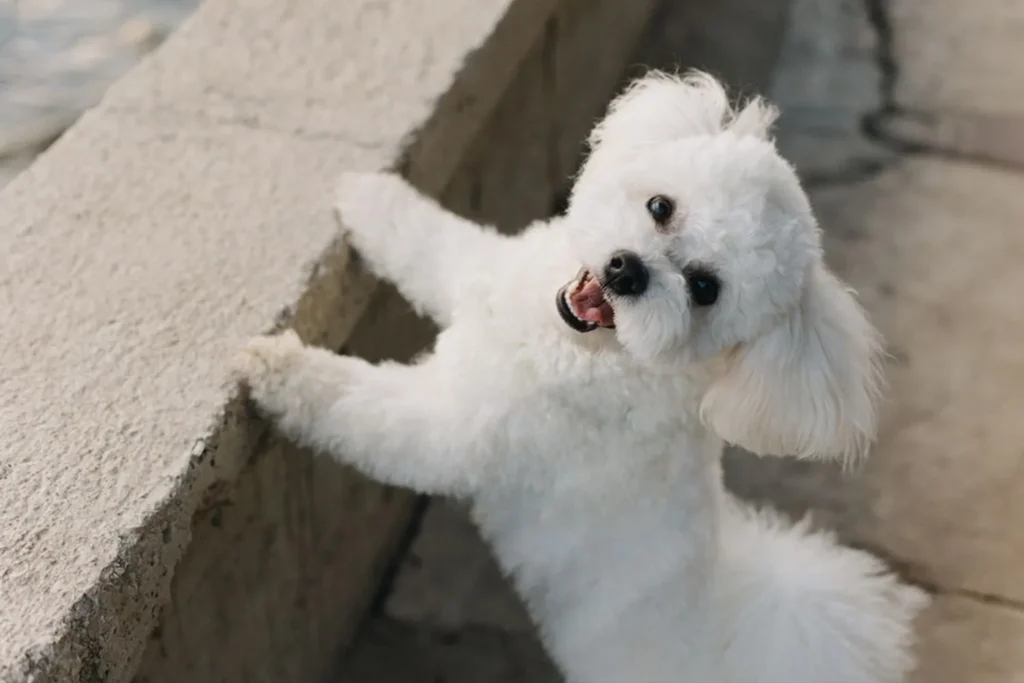
Bichon Frise FAQs
Why do Bichons smell?
A few Bichons can develop serious health issues, like liver or kidney problems, that make it harder for their bodies to process food and can cause a noticeable odor. If a usually sweet smelling fluffball suddenly gets stinky and nothing else has changed, call your vet. More commonly, though, it’s a grooming thing. Their soft, cottony coat can trap moisture and dirt, and that damp dog aroma lingers if they aren’t brushed and bathed regularly. I learned the hard way after a rainy park day my Bichon smelled like a soggy stuffed animal until I gave him a thorough wash and really dried him all the way down to the skin. Keeping up with regular baths, brushing a few times a week, and making sure ears and teeth are clean goes a long way. A quick tip: dry them completely after baths and walks, especially the armpits, belly, and ears, because lingering moisture is a sneaky culprit.
Do Bichons suffer from separation anxiety?
Yes, many do. Bichons are born social butterflies and thrive on being close to their people. Left alone for too long, they can panic think pacing, whining, barking, or trying to claw their way to you. When I first brought mine home, I tried a quick grocery run and came back to a confetti party made of tissues. What helped was practicing short, calm departures, giving a frozen, treat stuffed toy to work on, and keeping my hellos and goodbyes low key. A comfortable crate or gated “safe zone” can be a cozy den rather than a jail if you introduce it slowly with lots of positive vibes. And on long days, a pet sitter, trusted neighbor, or doggy daycare can make a world of difference.
Can a Bichon Frise be left alone?
They can, but it’s best in small doses and with training. Every Bichon is different some nap peacefully, others go into full drama mode. Start small: leave for a few minutes, return before your dog gets worried, and gradually build up the time. I used to set up a camera so I could see when my pup started fussing, then adjusted our practice sessions to stay within his comfort zone. A good walk or play session before you go helps them settle, and soft background noise (like a radio) can be comforting. Make departures and returns boring and predictable; consistency is everything.
What should I look for when buying a Bichon Frise puppy?
First, take a good look at the breeder and the environment. Puppies should be clean, bright eyed, and curious, with plenty of room to play. Meet at least the mother, and ideally both parents temperament is a big deal with Bichons. You want friendly and playful, not fearful or overly timid. Ask how the puppies are being socialized: have they met different people, heard household noises, and had gentle handling? Early socialization sets them up to get along with other pets and family. A responsible breeder will be transparent, provide vet records, and happily answer questions about the puppies’ daily routine and personalities. I like to bring a small toy and see which puppy engages, then notice who checks back in with me confidence plus connection is a great combo. And remember, you’re choosing a family member, not just a look: pick the puppy whose personality fits your home and pace of life. Most good breeders aim for parents with steady, affectionate temperaments, but it’s still smart to watch for those sunny, people loving traits in the puppy you bring home.
Disclaimer:
This article is for informational purposes only and doesn’t replace professional veterinary or training advice. Always consult a certified vet or dog trainer for guidance specific to your pup.
